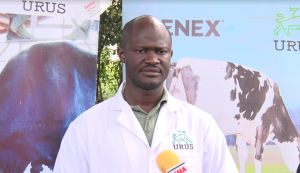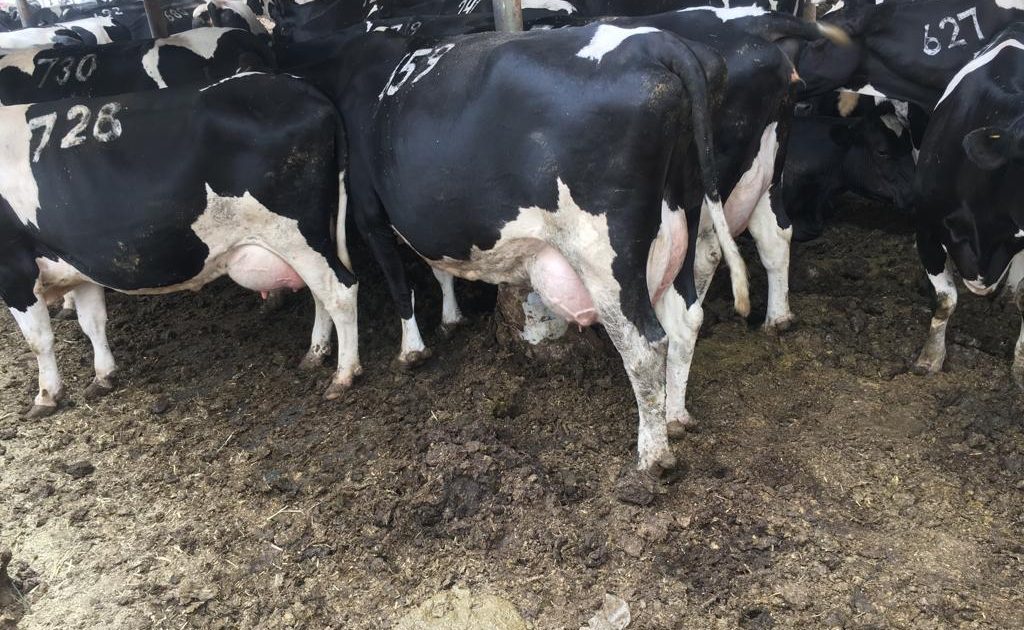In addition to the traditional Artificial Insemination (AI) services, the County Government of Kakamega is adopting embryo transfer technology on a pilot programme to produce high-quality cows.
The Chief Officer for Livestock and Veterinary Services, Barak George Otieno, said the Kakamega County Dairy Development Corporation (KDDC) smart farms will be used to fertilize eggs, from which embryos will be distributed to farmers.

Through the technology, farmers will be able to get high-quality offspring in a shorter time instead of waiting for generational breeding to realize superior-breed cows.
“Basically, we want to see if we can get quality dams and fertilize them with high-quality bull semen to produce embryos that are of high quality that can be planted in the surrogates,” he noted.
According to Dr. Greg Onyango from URUS Genetics, embryo transfer technology involves having donor cows with good traits, such as better milk production, better linear traits, and health traits that would be multiplied.
“What we are currently doing in Kakamega County is trying to adopt the technology of embryo transfer to multiply the superior breeds that we have in the county, so that we can be able to supply better genetics to farmers,” he explained.
Dr. Onyango, a veterinarian and reproduction expert in embryo transfer technology, said they will transfer better traits from cows that produce at least 40 liters of milk per day per cow so that farmers can realize maximum production from their cattle.
He said there are many low-production cows that farmers are keeping in Kakamega, which will now be used as surrogates to carry the pregnancies for high-production calves.
“Now we know that in Kakamega County, we have farmers keeping animals that are not really giving them satisfactory production. These cows can be used as surrogate cows to carry embryonic calves or pregnancies. So we can use the already existing resources in terms of animals being kept by farmers to carry embryos up to term to get calves,” he added.
He explained that the technology involves injecting the donor cows with hormones to ovulate more than one egg through a process known as superovulation of donor cows.
“A cow is normally designed to produce one egg per ovulation. But with superovulation, you can get up to 20 to 30 eggs, depending on the breed and the individual cow in question,” he explained.
Once the cow is superovulated and produces about 40 eggs, veterinary officers will then obtain the eggs and fertilize them with superior bull semen in the laboratories.
“So we know we have taken the eggs from a superior donor cow; we then choose a superior bull, whereby we use its semen to fertilize. After being fertilized in the lab, it will be cultured for seven days and then go through a process of becoming a zygote, a morula, a blastocyst, and then an embryo,” he added.
The mature embryo will be transferred to a surrogate mother, who will have been prepared to carry the pregnancy. Every surrogate mother will receive one embryo.
He said the pregnancy will be handled like a normal pregnancy, which would take nine months for the surrogate mother to give birth to a calf.
“Now with this short method, we would have multiplied calves from a small pull of superior donors using surrogacy to get so many calves in the county. Normally one donor cow will give us one calf per year because the gestation period of one cow is nine months, but with surrogacy, you can end up with between 20-60 quality calves in aggressive breeding programs per year from the superior donor using surrogacy,” he explained further.
Dr. Onyango says embryo transfer technology is more than 50 years old in the world, both in human and animal medicine.
“It has been in use as a reproduction tool in cows, specifically in developed countries, for decades. Some farmers in Kenya are already using the technology. When you are using embryo transfer technology, the conception rate ranges from 40 to 50 per cent with a good programme taken care of,” he pointed out.
“The difference between embryo transfer and Artificial Insemination, is that with AI, you are bringing in bull semen, the job that the bull would have done by mounting and fertilizing the cow. It’s the vet bringing the semen extracted from the bull and putting it in the cow. Basically, you are just fertilizing the egg that has been produced by the cow, and you are just introducing bull semen,” he said.
He noted that with embryo transfer technology, you are choosing both the semen from a superior bull and the egg from a superior cow to be fertilized, and you are fertilizing either in the lab or within the donor cow, where the embryo is introduced in a surrogate cow.
“The surrogate cow is not contributing any of her genetics to the calf that it’s carrying in its uterus, it’s just a carrier, it’s just carrying the pregnancy, but it’s not contributing even a single gene to the calf that it is carrying. So the vet or the farmer is in control of the genetics from both the sire and the dam part of the calf,” he added.
According to Dr. Onyango, embryo transfer can be done either through In Vitro Fertilization (IVF) where the egg is fertilized in the laboratory, or In Vivo Fertilization and Embryo transfer where the fertilization is done inside the donor cow.
“In Vitro Fertilization (IVF), fertilization is done outside the body of the cow, while In Vivo Fertilization, fertilization is done inside the body of the donor cow,” he explained.
By Moses Wekesa



